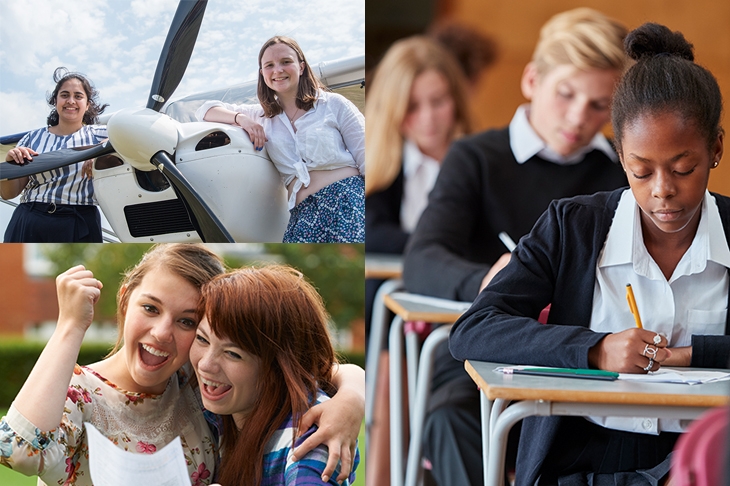MAKING THE GRADES
When he was education secretary, Michael Gove took it upon himself to reform the GCSE exam system. The A* to G grading system was replaced by a numerical one, with the aim of making it easier to differentiate between the top candidates — A* and A grades were, for example, replaced with three grades: 7, 8 and 9. These new exams were supposed to be harder than the previous ones, with former Harrow headmaster Barnaby Lenon commenting that they ‘contain questions of a level of difficulty that we have not seen since the abolition of O-levels in 1987.’ Despite all of this, GCSE results improved this year. The proportion of students achieving the pass mark (previously a C, but now a 4) increased by 0.5 per cent, with the level of boys scoring an A rising by 0.8 per cent to 17.2 per cent. The percentage of A grades in girls stayed constant, at 23.7 per cent.

BAC ON TOP
On the topic of exams, the International Baccalaureate celebrates its 50th birthday this year — and British students are leading the way in this qualification, too. In 2018 British pupils accounted for almost 25 per cent of the world’s top scorers.

The UK also achieves a higher points average than the rest of the globe — an average of 35 out of 45, compared to a worldwide average of 30. Around 5,000 pupils in the UK study the IB, with 143 schools offering it as an alternative to A-levels. Of these, 55 per cent are state schools and 45 per cent independent.
THE SKY’S THE LIMIT
At the beginning of July girls at Benenden School (below right) took to the skies in a light aircraft they built themselves. In September 2016 a team of 28 Benenden girls began work on the microlight, devoting two hours to the project every Thursday evening. Over 50 weekly sessions, the entire aircraft was built by the girls themselves, under the stewardship of staff members. The engineering was run with the British Microlight Aircraft Association (BMAA) as part of the organisation’s New Horizons scheme. After passing its official BMAA safety tests, the microlight was launched at Headcorn Aerodrome in Kent. It was flown by a team of different instructors on a number of separate flights — one for each of the girls involved and one extra for the headmistress, who was keen to experience the girls’ handiwork for herself.

‘Engineering skills are invaluable in today’s workplace and are only going to become more important as technology develops further,’ said headmistress Samantha Price. ‘I am so pleased to see how the girls have embraced this project. Also, they have inspired girls in the younger years who I am sure will be looking forward to taking on their engineering projects in the future.’
The girls have put their own stamp on the microlight: it is decorated in Benenden’s colours and the registration mark is G-GRLS. ‘I thoroughly enjoyed working in a team towards a common goal and learning new skills, especially for such a physically large, yet intricate project,’ said 18-year-old team member Zara Hussain. ‘This developed my passion in engineering further, which I am going to study at Oxford University next year.’
The BMAA owns the microlight and will now sell it, with the proceeds going back into the New Horizons scheme. The BMAA New Horizons project is available to all schools and colleges, independent or state. Meanwhile Benenden has already identified its next engineering project — constructing a Caterham 7 racing car.






Comments